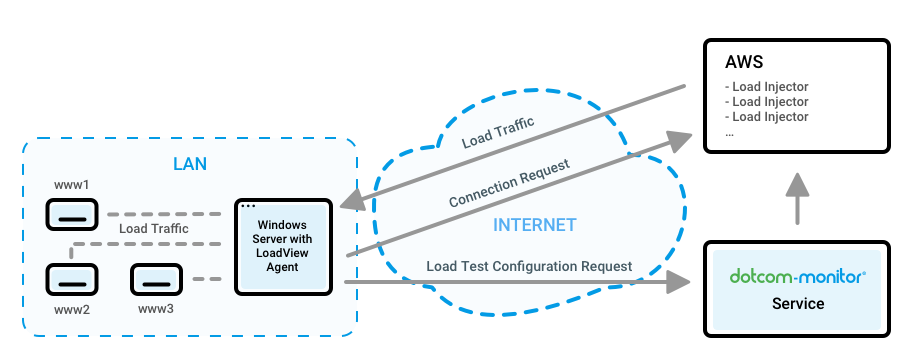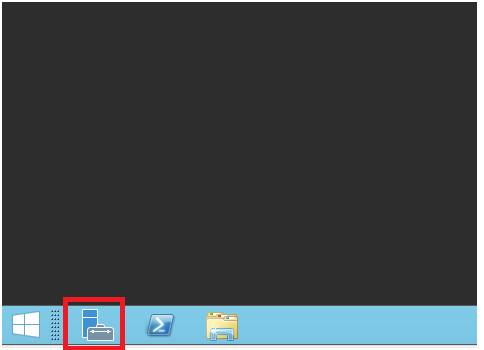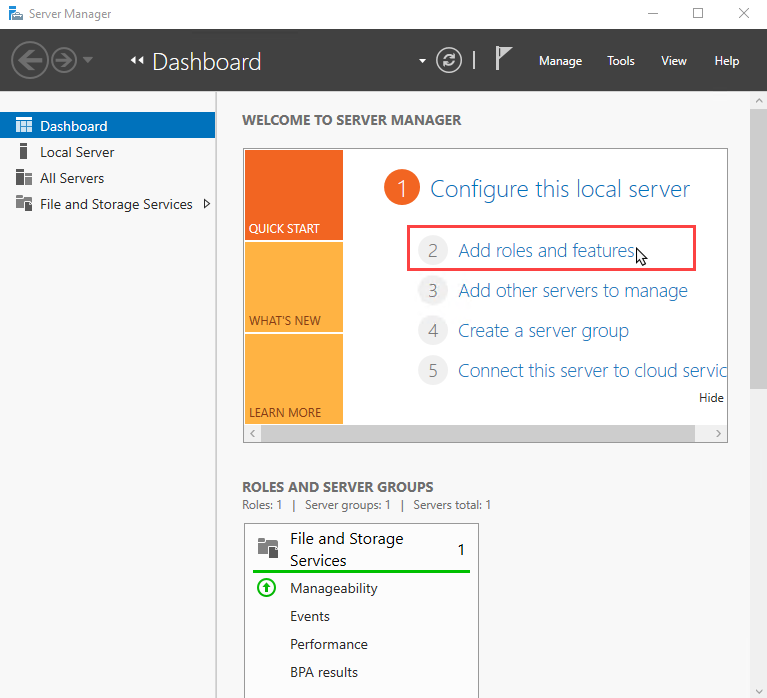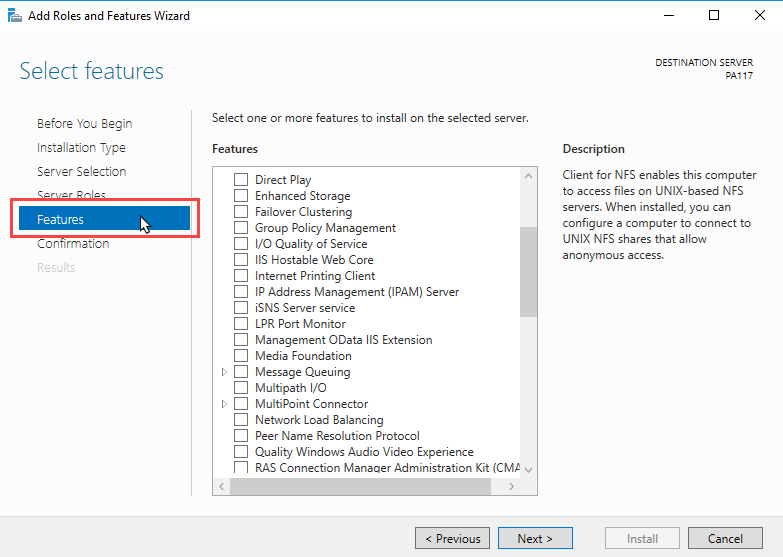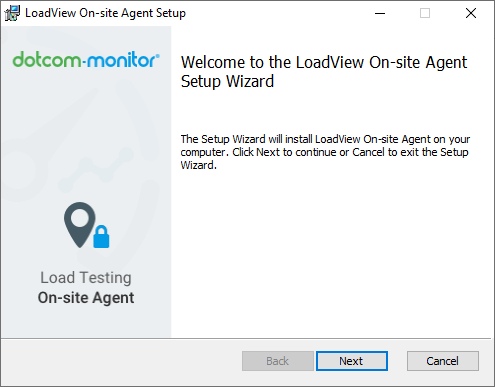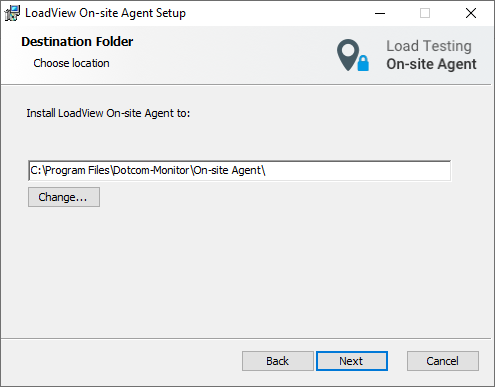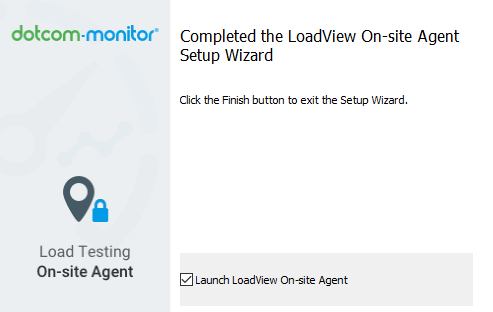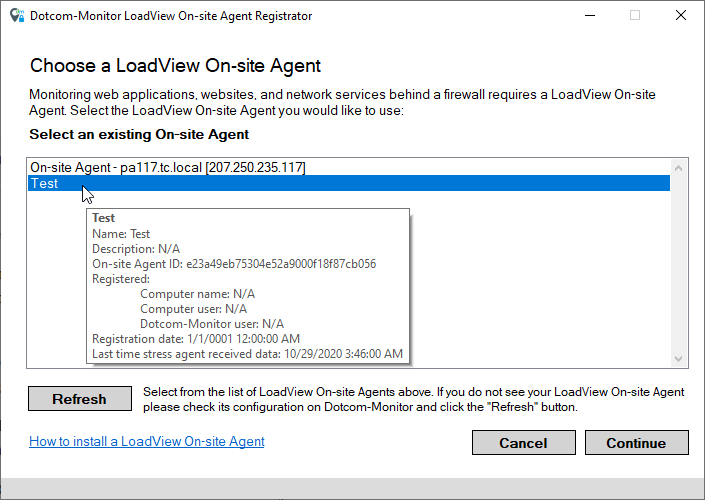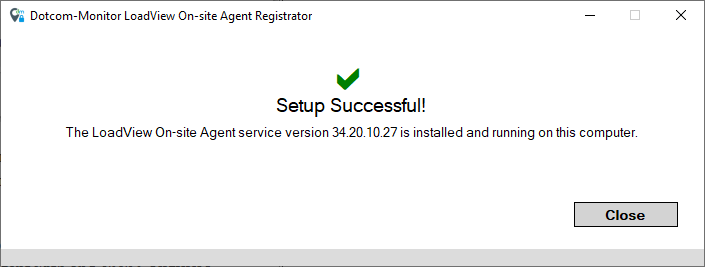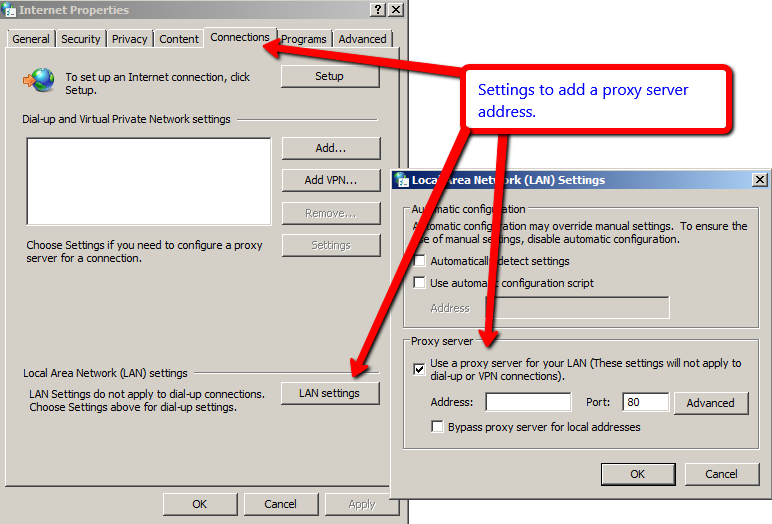Why do I need to use the LoadView On-site Agent?
Sometimes, it’s necessary to test a website that is not accessible from the public Internet. Dotcom-Monitor provides two options to do this.
First, you can whitelist LoadView Static Proxy IPs to allow traffic from LoadView in a company network. Although it is a simple way to implement load testing behind a firewall, it may be inappropriate to open the company’s firewall due to security reasons.
If whitelisting of the Static Proxy IP range is not allowed by your security policies, we provide another secure option: load testing from within your local network with LoadView On-site Agent. The LoadView On-site Agent can be installed on a dedicated Windows Server inside the same network as the target website.
Using the On-site Agent shouldn’t require you to open your firewall for incoming traffic.
How it works
Once the On-site Agent has been configured, it sends outgoing requests to Dotcom-Monitor Service to check if any load tests were started for the corresponding target website and the load test configuration. Once the test configuration has been received by the On-site Agent, it initiates multiple connections to Load Injector Servers (LIs) from within the local network using port 443. LIs use the same connections to send load testing data to On-site Agent. Thus, all load testing traffic to the target will be sent via the On-site Agent from the company network.
The On-site Agents can be installed and used to execute HTTP, web application, and web page tests.
Load Capacity
On-site Agent capacity is limited by two factors: the number of virtual users and the number of load tests per On-site Agent.
The On-site Agent can run a maximum of 3 load tests at a time regardless of the type of the load tests.
The limitation on the number of virtual users per LoadView On-site Agent highly depends on the website behavior. For example, dynamic web pages that use a lot of third-party JavaScript will require more resources for the test.
Generally, the On-site Agent limitations for an average website are:
- Browser-based test: 50 virtual users per agent
- HTTP-based test: 1000 virtual users per agent
Let’s say you need to simulate 100 virtual users on the target website, then you need to leverage at least two On-site Agents for the test.
System Requirements
This guideline walks you through all steps required to prepare the installation, execute the setup, and configure your test scenario to use the LoadView On-site Agent.
Hardware requirements:
- 2-core CPU or higher
- 8 GB RAM
- 1 GB Hard Drive space
- OS Windows 10, Windows Server 2012 or higher x 64bit
Software prerequisites:
- .NET Framework 4.7
- Administrative Access for installation and execution
- Chrome (latest release) or Edge (latest release) for On-site Agent registration only
Outgoing traffic requirements:
Due to the dynamic nature of the IP addresses of our Load Injector Servers, LoadView On-site Agent must have an outgoing connection to all URLs. If it is not an option, you can open an outgoing connection to the specific cloud region that will be used in load testing. Please check the AWS and Azure online resources for an IP range of the required cloud region.
In addition, make sure that your LoadView On-site Agent has access to:
- https://userauth.dotcom-monitor.com/ – for SSO login if required
- https://privateagentcontroller.dotcom-monitor.com
To make sure that access to https://privateagentcontroller.dotcom-monitor.com is allowed check the following URLs:
- https://privateagentcontroller.dotcom-monitor.com/PrivateAgentWebProxy/entrypoint.wproxy – must return a blank page
- https://privateagentcontroller.dotcom-monitor.com/PrivateAgentController/RemoteConfigurationService.svc – must return a web service page
-
Preparation of your LoadView On-site Agent Installation
-
Install LoadView On-site Agent on your Server
-
Proxy Settings

